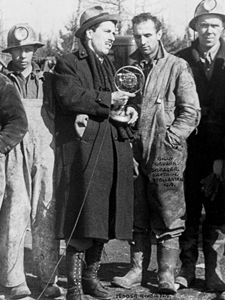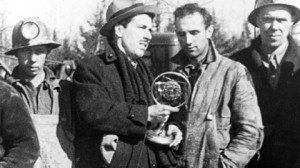
He didn’t look much like a pioneer. But J. Frank Willis sure was. Dressed in tall boots, a long coat and scarf, wearing a fedora – typical of the 1930s – he was a reporter. Hearing news of a coal-mine rescue underway in a remote corner of Nova Scotia, he made his way to a place called Moose River.
There, he found the only available land telephone line and got permission to broadcast from the mouth of the mine. Miners were trapped 50 metres underground and their would-be rescuers had been digging for days to reach them. Willis held his primitive microphone in front of one of the rescuers.
“Here, ladies and gentlemen, is the captain of the rescue team from Stellerton, Nova Scotia,” Willis said.
“Hello Stellerton,” the captain said. “We’re getting’ along fine. We’ll have those men up in a couple of hours.” (more…)
